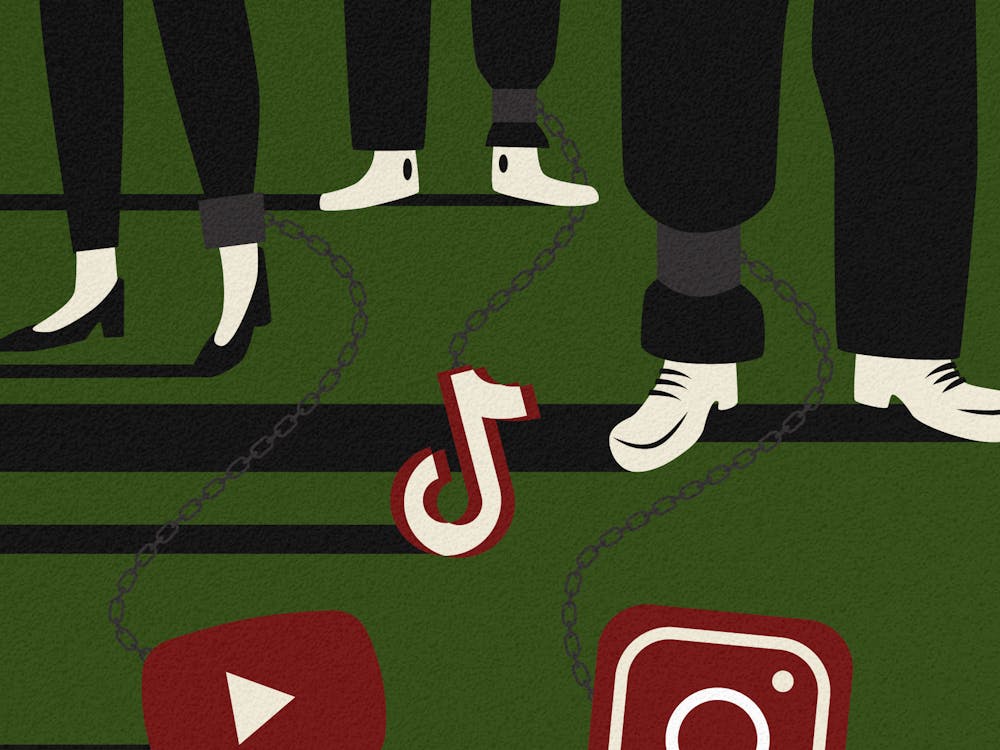The following reflects the majority opinion of the Editorial Board of The Miami Student
Saturday's Unity March marked the beginning of Diversity Week on Miami's campus. This week resounds the call for students of different background and cultures to come together and learn about each other's backgrounds and experiences.
As we wrote in last week's editorial, after the discovery of decades of racism and homophobia in Miami's Recensio, the former yearbook publication, we must act collectively and with intention to repair the damage that hate has caused -- and still causes -- on this campus. Now more than ever, we need students of diverse backgrounds coming together to communicate and share their own experiences.
On paper, Diversity Week is a great opportunity to bridge the divide on campus between students of different ethnicities and backgrounds. However, the reality is that many students are not taking these events as seriously as they should. This was proven true on Saturday when around 30 people turned out to the Unity March.
The other sad truth is that the events of Diversity Week will be attended largely by (1) students who are already painfully conscious to the issue of diversity at Miami and (2) students whose professors give them academic incentives to attend. Many of the students who could benefit the most by attending, meaning those who need to be exposed to lives different than theirs and reevaluate their viewpoints, will likely be absent from these events.
After last week's editorial and story on Recensio, the university issued a statement talking about the steps it is taking to promote diversity and inclusion on campus. These include mandatory diversity training for new employees and students, community input through the climate survey and multicultural events such as Diversity Week.
While these steps are good, they aren't enough. They will not reach the root of the problem.
The climate survey only accounts for those students and faculty who actually take the time to complete it, and if last year's survey has taught us anything, this number will be low. Forcing students and staff to take a diversity training course does not mean they will pay attention to the underlying issues. In fact, forcing people to do something makes them less receptive to its content. Many students who had to take similar courses on alcohol and sexual assault rushed through them to check a box.
This problem has to be fixed at the admissions level by recruiting more diverse students from different backgrounds. However, to get these students to arrive on campus, steps must be taken in order for those students to actually want to be on this campus.
There is no perfect or obvious prescription for this paradox, but we believe more can be done than we are currently attempting.
First, graduation requirements for the Miami Plan and the College of Arts and Sciences need to change. Right now, students are required to take six credit hours for the Global Perspectives requirement and three hours for Intercultural Perspectives; however, the range of classes that satisfy these requirements is thematically broad. Some of these required hours should have a restricted menu (or additional required credits could be reallocated from elsewhere), pared down to inform students about social issues facing the United States today or educate on contemporary non-Western culture.
Such requirements would allow for students to learn about cultures outside of western Europe or mainstream American culture and expand their worldview. If the university is going to require a strategic communication major to learn about geology, it can -- and should -- require them to learn about a different culture. Teaching students about diversity in a classroom setting also allows them to actively engage with the topic and ask questions in a safe environment. This, in turn, will help to create a campus with more socially conscious students.
Enjoy what you're reading?
Signup for our newsletter
Second, Miami needs to recruit a more diverse faculty and staff to teach students. As of fall 2017, nearly 85 percent of Miami's faculty and staff were white.
The university must do better in recruiting faculty and staff of different races and backgrounds in order for students to be better immersed in diversity. In departments across disciplines, having a faculty member who presents information through a different cultural lens is beneficial for expanding students' understanding.
Many of these same faculty are academic advisors who guide students throughout their time at Miami. For a minority student, having an advisor who can relate to their experiences is crucial for improving their experience on campus.
Finally, Associated Student Government (ASG) should include a mandatory diversity self-evaluation for student organizations to receive funding. This would prompt organizations to evaluate how they are incorporating diversity in their organization, and how they are working to include more diverse members.
Many organizations, such as Spectrum and Black Women Empowered, already focus on an aspect of diversity. However, for organizations such as pre-professional societies and student media, talking about diversity and how it relates to their organization is crucial in improving interaction of students with different backgrounds.
The university recognized its past of hatred and bigotry in its statement last week, but now it must work toward improving its future.



